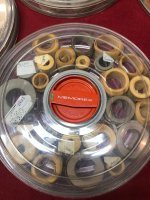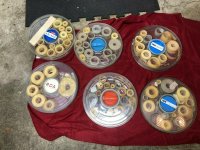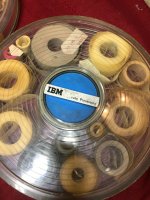T4600C
Experienced Member
Is there any new/DIY hardware that can digitize punched tape to a modern digital format?
Be it saving the raw 8-bits to a .bin file or saving the program to a .txt file in ASCII.
Because I acquired lot of punched tapes from the USA with the intent to digitize, preserve and make the contents available online.
Maybe we will find some interesting historical artefacts hidden within the holes, data previously lost to the aether but saved from the ultimate demise.
Thought this could be a cool project and help preserve a snippet of computer history.
I found this new OP-80a that seems like a good candidate? http://jmprecision.co.uk/shopping/pgm-more_information.php?id=149&=SID
Ideas if it would be possible to make an Arduino read the output and write to a file?
Some photos:




Be it saving the raw 8-bits to a .bin file or saving the program to a .txt file in ASCII.
Because I acquired lot of punched tapes from the USA with the intent to digitize, preserve and make the contents available online.
Maybe we will find some interesting historical artefacts hidden within the holes, data previously lost to the aether but saved from the ultimate demise.
Thought this could be a cool project and help preserve a snippet of computer history.
I found this new OP-80a that seems like a good candidate? http://jmprecision.co.uk/shopping/pgm-more_information.php?id=149&=SID
Ideas if it would be possible to make an Arduino read the output and write to a file?
Some photos:







